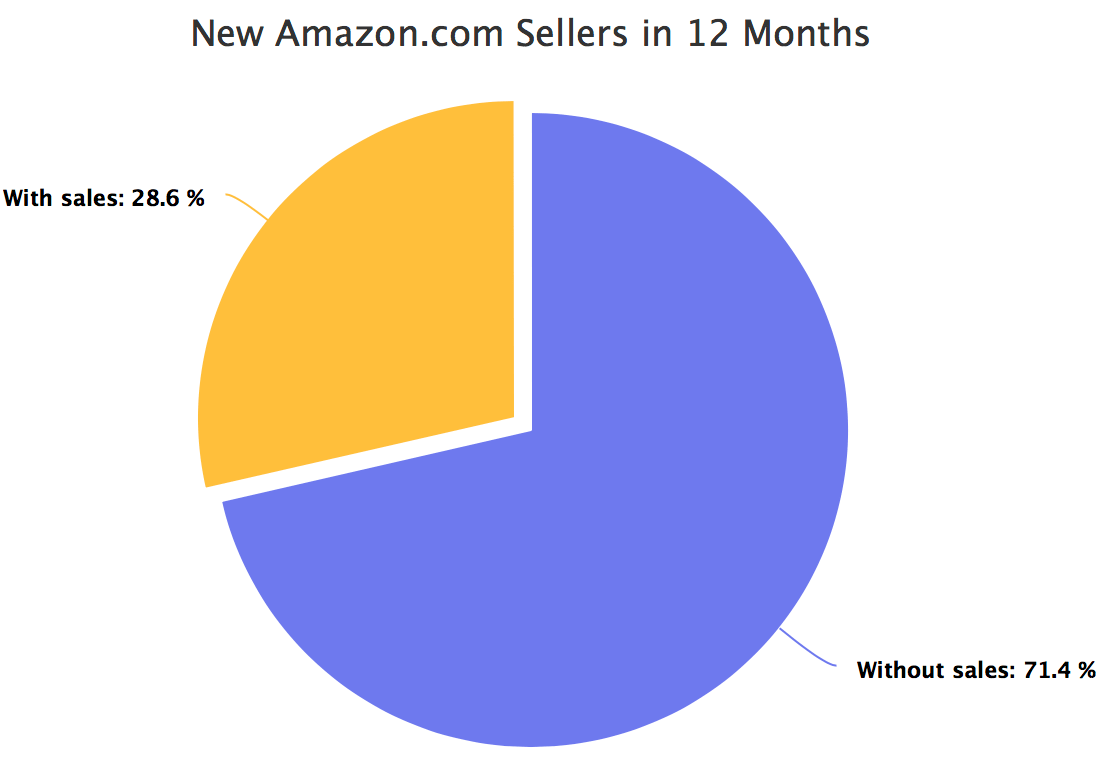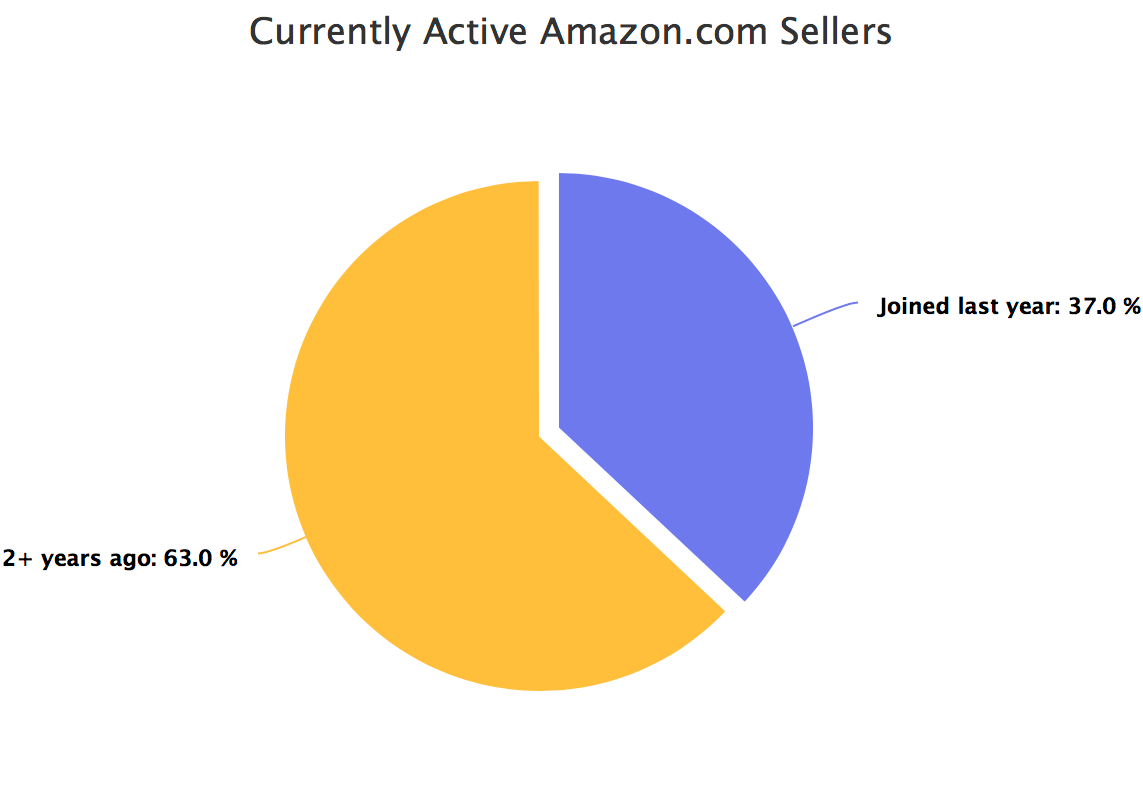Some of the most important metrics for marketplaces are the number of sellers growth and sellers retention. All marketplaces rely on not only growing the marketplace, but also making sure churn rate - the percentage of customers or revenue lost to churn over a period of time - is controlled.
We have touched on this before when we said that over 100,000 new sellers join Amazon marketplaces every month. But that is an incomplete metric as it doesn’t explain what happens after they join the platform. A big portion of those are from automated bots, creating thousands of accounts in hopes to execute some kind of a scam.
In the last 12 months, we detected close to 700,000 new sellers join Amazon.com. Many more joined other Amazon marketplaces, but in this analysis we chose to focus on the US market alone.

200,000 new sellers had a sale in a year. So 72 percent of new sellers end up never listing any products or having any sales.
Out of those, 70,000 sellers kept selling for longer than 3 months. 38,000 sellers kept selling for longer than 6 months. This illustrates that as time goes on, sellers fall off.
Sellers who joined 9-12 months ago, 13,000 are still active. Sellers who joined 6-9 months ago, 15,000 are still active. Sellers who joined 3-6 months ago, 16,000 are still active. For each of those time frames, sellers which are still selling represent 30 percent of those which had a sale.
So out of all the new sellers in a year, less than 30 percent ever get a sale, and less than 10 percent are still selling today.
This analysis was inspired by looking at Etsy’s 10-K annual report cohort of active sellers which highlights that roughly 32 percent of active sellers are still active 4 years later. Which means if they were active in 2011, they are still selling in 2014. Etsy defines active sellers as any seller with sales in a 12 month period.

On Amazon this percentage is much lower, the number of sellers selling 4 years later must be in single digit percent. Out of currently active sellers, 37 percent joined last year. In this context active sellers are defined as sellers which had at least one feedback review in a month. What this means is that the marketplace is constantly refreshing itself, with new sellers replacing old ones.
There is a lot of new sellers joining, but only a small percentage of them stay for a longer period. This is very apparent when looking at how many sellers had a sale last month, compared to 12 months ago - for Amazon.com that number is growing, but at a relatively slow pace.
The lesson from this analysis is that while joining Amazon is easy, turning it into a long-term business is not. Sounds obvious, but in this case we have numbers to showcase the difference. Existing sellers on the platform should not get easily fazed by competition, especially by “Just Launched” sellers, because few of them will be around next month.
When we wrote that Amazon Got the Scam Sellers Issue Under Control we got a number of responses that there are still hundreds of scam sellers on the platform. The key to understand here is that there is a difference between a scam seller on the platform, and it being successful. Amazon over time has become much more aggressive on automatically suspending new sellers, so while at any given point it might appear that there are a lot of new sellers, they get suspended fairly quickly, and thus a decreasing number of them are on the platform long enough to be successful.

